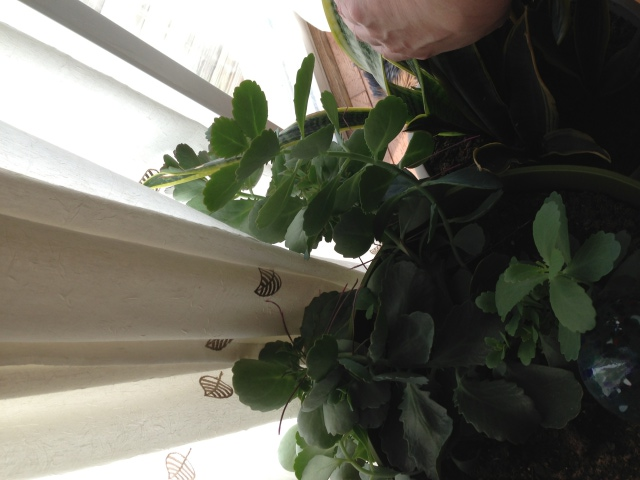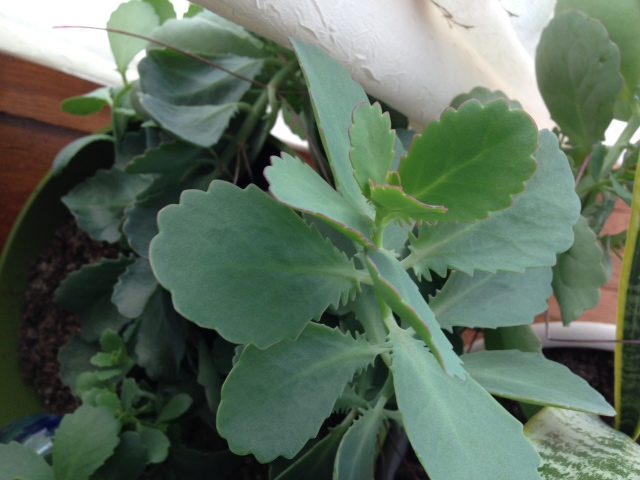Question
 Second plant - photo 1
Second plant - photo 1  Second plant - photo 2
Second plant - photo 2
Here is my second plant that I don't know what kind it is...
AnswerChristina,
It is a Kalanchoe pinnata. Kalanchoe pinnata is a succulent perennial herb. Its leaves are grey green with distinctive red-trimmed scalloped edges in the sun. The pendulous, bell shaped pink-and-green flowers appear from late spring to early summer. The stem is tubular and hollow.
This plant likes bright, indirect sun for part of the day, but it can take some full sun. It does not need much water, being a succulent, and the soil should be allowed to dry before watering when the plant is grown in containers. Plant Kalanchoe pinnata outdoors in places with no standing water in a tropical area, otherwise keep it in a pot in fast draining soil such as cactus soil.
Kalanchoe pinnata prefers well-draining, sandy soil without much organic matter. It is adaptable to a wide range of soil types. Fertilize with a low-nitrogen fertilizer once a year in early spring. It does not like to be over-fertilized.
The seeds of this plant are usually sterile, but the plant produces plantlets easily when you place a leaf flat on top of the soil. Plantlets will grow from the notches in the leaf margins. Plantlets will sometimes grow from leaves still on the plant and can be removed and put on top of the soil to continue to grow. The plant can also be propagated by vegetative cuttings stuck into sand. No rooting hormone is necessary.
Kalanchoe pinnata can become invasive if planted outside in warmer climates. It is classified as a Class 1 invasive in Hawaii and a Class 2 invasive in Florida. Always dispose of extra plants by placing them in a plastic bag in the garbage. Do not dispose of these plants with unbagged yard trash, as they are a potential danger to native flora and fauna. Although it is used medicinally, never ingest any part of this plant without first consulting a physician for proper usage. This kalanchoe has caused illness and death in grazing animals that consumed excessive amounts. Clinical research has shown it to be a central nervous system depressant.
It could hurt pets and children if a large amount of leaves are eaten. Keep in in a pot with drain holes and never allow it to sit in standing water. Good luck!
Darlene







